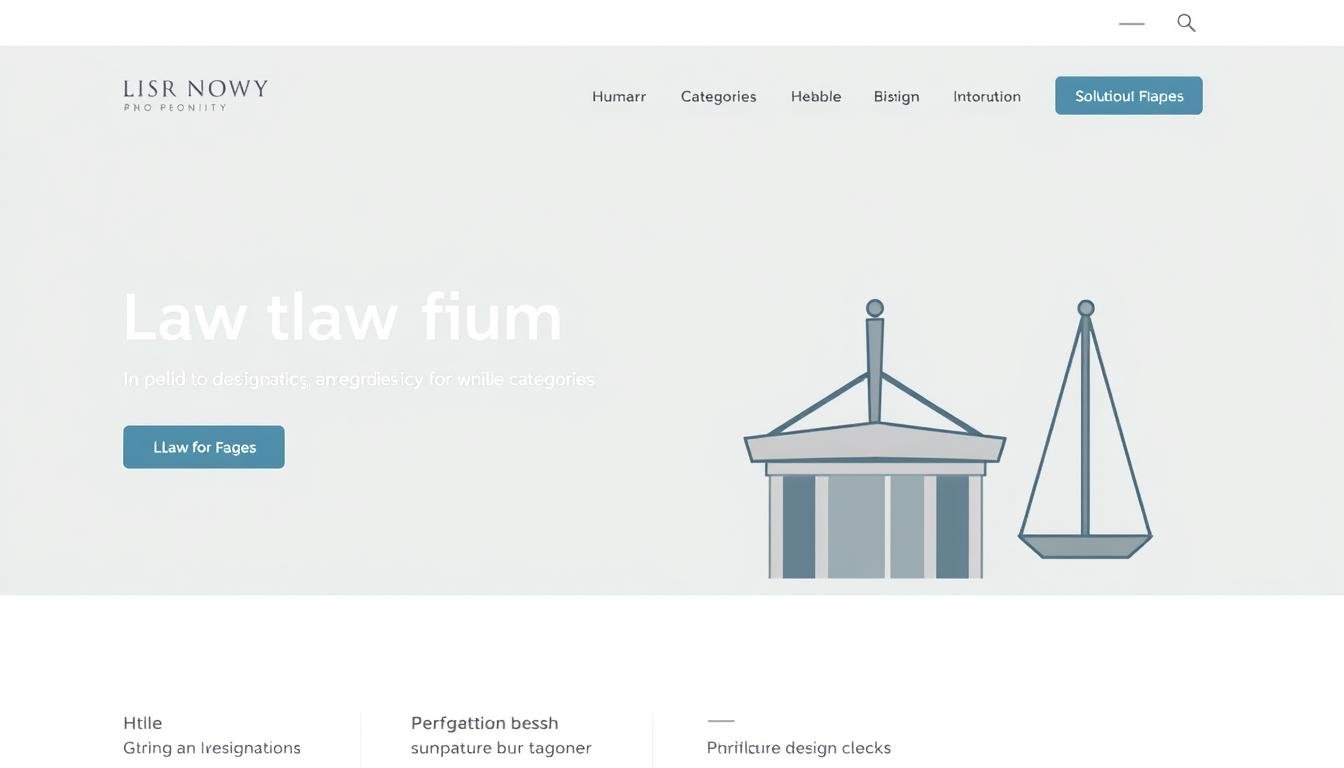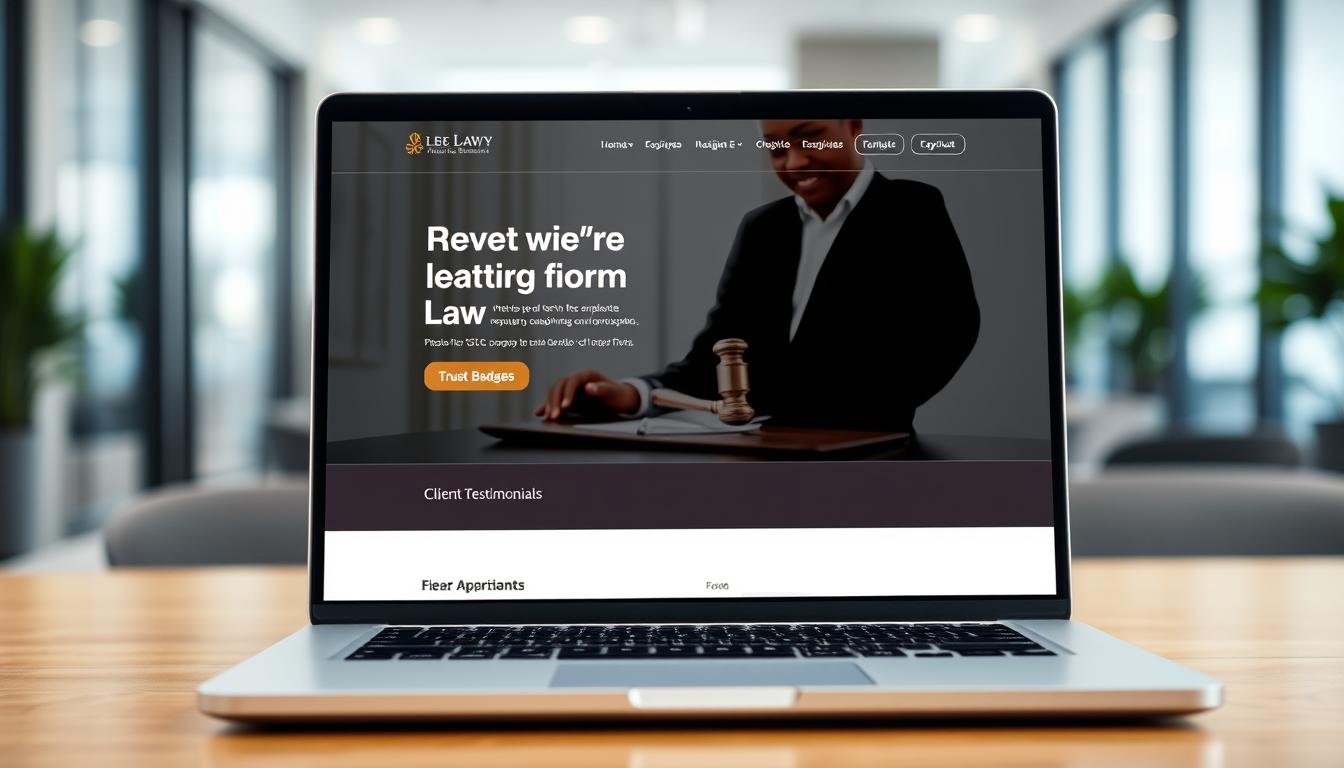Did you know that people’s attention spans are now shorter than ever? This means website visitors have only a few seconds to grab their interest. In the busy world of legal marketing, clear CTAs for legal websites are more important than ever. At Law Webber, we know that effective call-to-action buttons are key for website conversion.
They help guide potential clients through their decision-making journey. This ensures they don’t leave without taking action.
Many visitors are in the consideration stage, just browsing your website without a clear plan to act. A simple “contact us” message often doesn’t grab their attention. Instead, we need strategic CTAs that offer solutions and encourage action.
Customized CTAs can point users to helpful resources. This helps them move closer to becoming clients. This article will share best practices, key elements, and examples to improve your law firm’s user experience and lead generation.
Key Takeaways
- Clear CTAs are essential for improving website conversion rates.
- Attention spans are shorter, making effective CTAs critical in engaging visitors.
- Strategic placement of CTAs can significantly influence visitor interactions.
- Customized CTAs help guide users through their journey towards conversion.
- High-quality content combined with clear CTAs enhances user experience.
- A/B testing is essential to identify the most effective CTAs for your audience.
- Visual appeal and urgency in CTAs can drive prompt action from potential clients.
Importance of Clear CTAs in Legal Websites
Call-to-action (CTA) phrases have become key since the 1977 Supreme Court ruling in Bates v. State Bar of Arizona. Today, they are vital for law firms online. They help visitors move from learning to taking action. Without clear CTAs, even great content can struggle to convert.
Understanding the Role of CTAs
Clear CTAs guide visitors from learning about law to hiring an attorney. Personalized CTAs make content more relevant, boosting conversion rates. Sadly, 83% of legal sites miss out on CTAs, missing out on new clients.
Enhancing User Experience
Effective CTAs are key to engaging users. Sites with tailored CTAs see a 65% jump in user interaction. Simple, clear language and prominent CTAs make navigation easier. CTAs should be above the fold for immediate visibility.
Building Trust with Potential Clients
Trust is crucial in law. CTAs that address concerns, like free consultations, work well, with 94% of users responding. Using contrasting colors for CTA buttons can increase interaction by 40%. Bold, different CTAs can lead to a 60% increase in inquiries and consultations. These strategies not only grab attention but also build trust.
Key Elements of Effective CTAs
Creating effective calls-to-action (CTAs) is key for better user engagement on legal websites. A good CTA needs clear and concise language, is easy to see, and encourages action. These elements help improve conversion rates.
Clarity and Conciseness
CTAs should clearly tell users what to do. They should use simple language that’s easy to understand. Phrases like “Get Started” or “Request a Consultation” are great because they’re direct and clear.
Visibility and Design
The look and where CTAs are placed matter a lot. Using bright colors and placing them wisely makes them stand out. Also, using empty space around CTAs helps focus users’ attention. Testing different designs and places helps find what works best.
Action-Oriented Language
Using words that push users to act is crucial. Phrases like “Download,” “Join,” or “Start Today” create a sense of urgency. Making CTAs personal, like “Create my account,” can also increase clicks. Good CTAs meet users’ needs and encourage them to interact.

| Element | Description | Importance |
|---|---|---|
| Clarity | Direct and easily understood language | Reduces confusion, encouraging action. |
| Visibility | Contrasting colors and strategic placement | Increases likelihood of user interaction. |
| Action-Oriented Language | Words that encourage immediate action | Boosts engagement through urgency. |
Strategies to Implement Clear CTAs
Creating clear CTAs is key to improving user experience and boosting website conversion. We focus on three main strategies: precise placement, A/B testing, and using multiple CTAs for different user groups.
Placement on the Website
Where you place CTAs is crucial for their success. Putting them above the fold makes them easy to see, which boosts engagement. High-traffic spots like homepages and blogs work best. The right spot can also help your legal marketing, leading to more conversions.
A/B Testing for Optimization
A/B testing is essential for perfecting CTAs. It lets us try out different designs, like colors and fonts, to see what works best. Even small improvements can lead to big gains in revenue. With a 67% boost in conversion rates from A/B testing, it’s clear this method is crucial.
Using Multiple CTAs
Having multiple CTAs on your legal website can really improve user interaction. Different visitors are at different stages, so we need tailored CTAs. For example, a CTA for a free consultation is for those ready to act, while a guide download is for information seekers. This way, we meet the needs of various audience segments.

| Strategy | Description | Impact on Conversion |
|---|---|---|
| Placement | Position CTAs above the fold and on high-traffic pages. | 46% increase in conversion rates. |
| A/B Testing | Experiment with different CTA elements for optimization. | 67% increase in conversion rates. |
| Multiple CTAs | Tailor CTAs to various audience segments and journey stages. | Increased engagement and relevance to potential clients. |
Examples of Successful Legal CTAs
In today’s competitive world, we can learn from top law firms. They use urgency in their CTAs, like “Schedule Your Free Consultation Before Time Runs Out.” This approach boosts engagement. A well-written CTA can turn visitors into leads with just one click.
Case Studies from Leading Law Firms
Top firms know how to engage users. They optimize CTAs with free case reviews, testimonials, and legal advice. This increases their chances of converting visitors into clients. Personalized CTAs can even boost engagement by 202%.
Lessons Learned from Best Practices
Creative CTAs, like those with social proof or quizzes, improve user experience. A simple “Contact Us Today” can greatly increase engagement. Regularly testing CTA language and designs helps improve them based on what users like.
Creative Approaches to CTAs
Clear and action-oriented language is key. Using verbs like “Get Help Now” or “Book a Free Consultation” works well. Also, using colors that match the site makes buttons stand out. This shows that design’s psychological impact is as important as the words.






